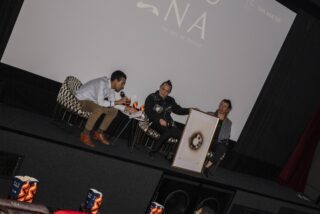This website uses cookies so that we can provide you with the best user experience possible. Cookie information is stored in your browser and performs functions such as recognising you when you return to our website and helping our team to understand which sections of the website you find most interesting and useful.
Interview: Actor Gabriel Leone talks bringing Formula 1 driver Ayrton Senna to life in new Netflix series
By Adam Hay-Nicholls | 24 December 2024 | Culture, Motoring, Sport
Tempus chats with Gabriel Leone about honouring the life and legacy of Formula 1 legend Ayrton Senna in new Netflix series
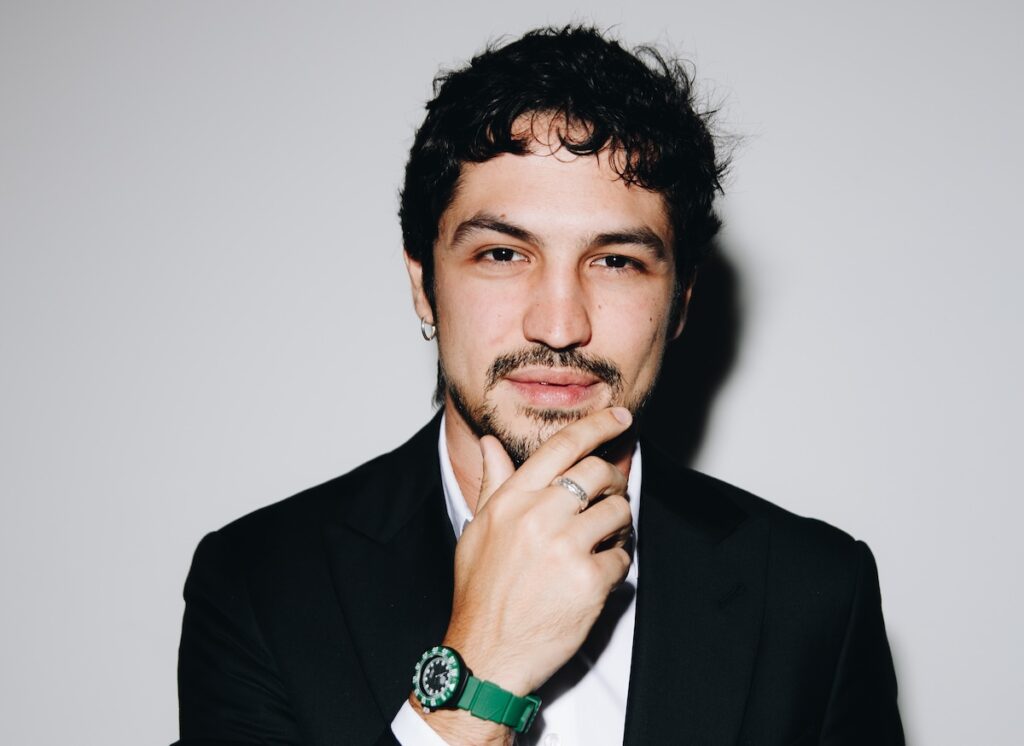 Ayrton Senna drove like a man possessed. His rivals feared him; his country worshipped him. When he was killed in a crash 30 years ago on live television, he left a legacy of tears, adulation and debate. Now, his life has been turned into a newly released six-part Netflix series, starring 31-year-old Gabriel Leone as the Brazilian Formula 1 hero.
Ayrton Senna drove like a man possessed. His rivals feared him; his country worshipped him. When he was killed in a crash 30 years ago on live television, he left a legacy of tears, adulation and debate. Now, his life has been turned into a newly released six-part Netflix series, starring 31-year-old Gabriel Leone as the Brazilian Formula 1 hero.
The launch of the series also coincides with the production of a new Senna watch — the fifth limited-edition tribute to Senna that TAG-Heuer has crafted.
TAG Heuer’s partnership with Ayrton first began when he joined the McLaren team in 1988 and has endured far beyond his premature death. Indeed, a new commercial deal was inked just two days before his passing. The new TAG Heuer Carrera Chronograph Tourbillon X Senna is based on the recent Carrera Extreme collection and is decked out in the blue, green and yellow colours that comprise the Brazilian flag. Restricted to 500 examples, it retails at £33,050.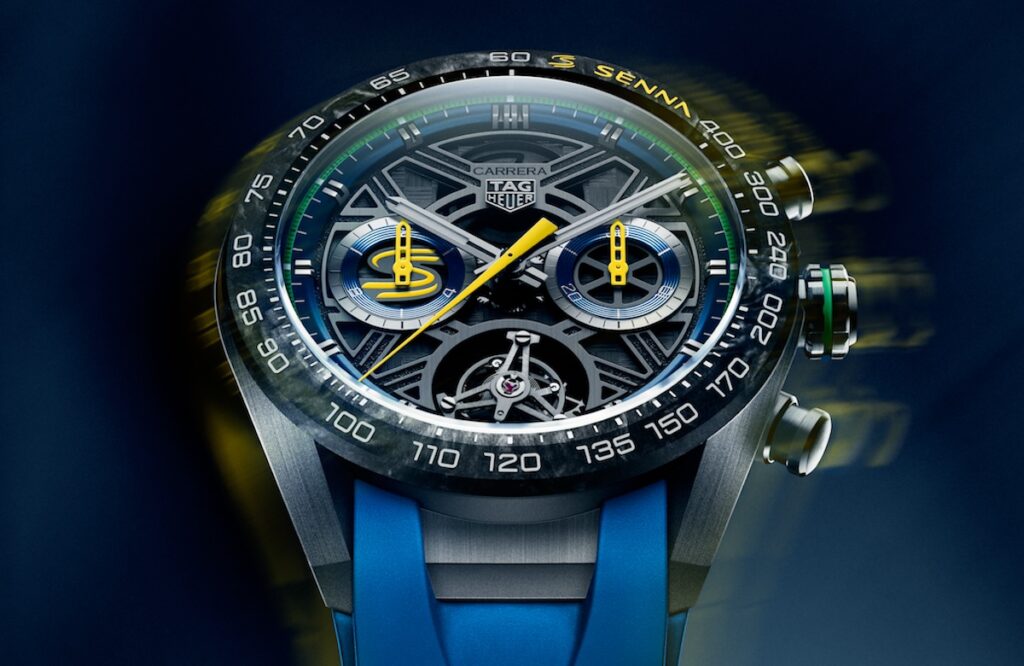 Timepieces play a subtle role in Senna, not only charting the racing driver’s career and the fashion of 1980s and early ’90s chronographs, but also as a metaphor for how his entire life was against the clock and he only had so much time to achieve what he needed to. In the opening episode, as 21-year-old Ayrton is about to move from Sao Paulo to England to take up junior single-seaters, Senna’s father Milton takes the vintage Heuer off his wrist and gives it to his son.
Timepieces play a subtle role in Senna, not only charting the racing driver’s career and the fashion of 1980s and early ’90s chronographs, but also as a metaphor for how his entire life was against the clock and he only had so much time to achieve what he needed to. In the opening episode, as 21-year-old Ayrton is about to move from Sao Paulo to England to take up junior single-seaters, Senna’s father Milton takes the vintage Heuer off his wrist and gives it to his son.
Later in the series, we see Ayrton wear the TAG Heuer with which he’ll always be most closely associated, the S/EL (sports elegance) $25.706C Link Chronograph with gold bezel and tan leather strap. At the end of the 1993 season, he actually swapped the one he’d worn during his epic wins at Monaco and Donington Park that year with a McLaren mechanic, who gave Senna his £15 Casio in return (the TAG later sold at auction for £55.500).
Speaking to Tempus, actor Gabriel revealed he wore watches during filming that had been lent from TAG-Heuer’s archive, but that he also got to wear one of the Links that Ayrton owned himself: “His family kindly lent it to me for a photoshoot.”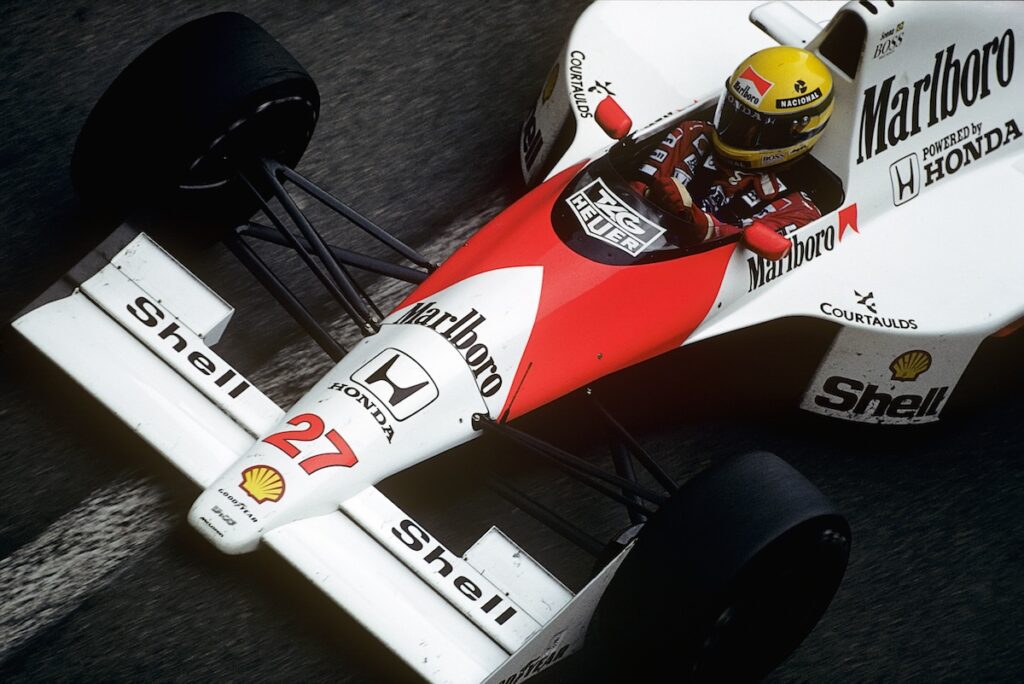 Senna was, in many ways, the first truly professional F1 driver. Like many elite sportspeople, he was a control freak and a paranoiac. But he was also thoughtful and engaging. He was gentle and generous away from the white heat of competition (he gave extensively to charity, usually anonymously, and was particularly concerned with the plight of poor children), and he also possessed an impish sense of humour that would reveal itself at his most relaxed.
Senna was, in many ways, the first truly professional F1 driver. Like many elite sportspeople, he was a control freak and a paranoiac. But he was also thoughtful and engaging. He was gentle and generous away from the white heat of competition (he gave extensively to charity, usually anonymously, and was particularly concerned with the plight of poor children), and he also possessed an impish sense of humour that would reveal itself at his most relaxed.
Ayrton left no widow or children, so the keepers of the flame are his sister Viviane, founder of the Instituto Ayrton Senna, and her daughter Bianca, the CEO of Senna Brands. Both were closely involved in the development of the scripts for Senna and the casting of the lead actor — a process which took five years. They needed someone who could act in Portuguese and English and convey the two sides of Senna: ruthless competitor and the big-hearted family joker.
“The guy in the races is one Ayrton but away from the track he was another Ayrton,” Bianca told The Times. “And Gabriel was able to connect those two contradictory elements. I cried a lot when I was watching the series. Not because I felt sad, but because I met Ayrton again. I feel emotional thinking about it even now. [Gabriel made Ayrton come back to us in a very sweet and perfect way.”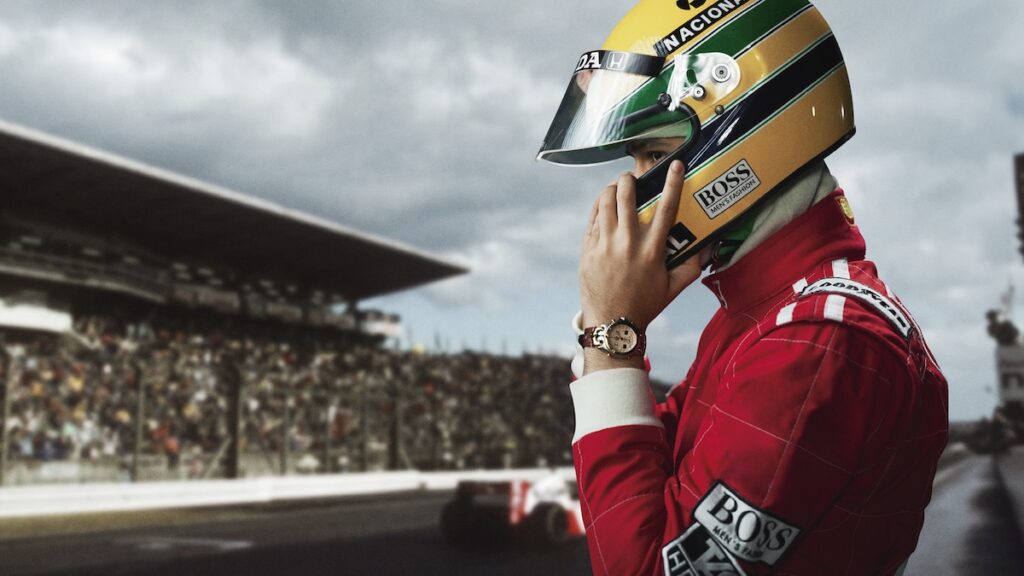 BOY FROM BRAZIL
BOY FROM BRAZIL
It’s not the first time Gabriel, who is from Rio de Janeiro, has played a racing driver. He was cast in Michael Mann’s Ferrari, which came out last year, in the role of Alfonso de Portago, a Spanish aristocrat who came to a particularly tragic end on the 1957 Mille Miglia in Italy when a tyre burst at 150mph, killing him and ten others. Gabriel clearly has the look of a red-blooded young pilot, and his face is a good fit for Ayrton.
“I met his family first on Zoom, and later we had some amazing conversations, especially about Ayrton as a brother and uncle; the man behind the driver,” says Gabriel. “They were always really generous and supportive to me.” He also met Xuxa, a former girlfriend of Senna (and one of Brazil’s most successful entertainers of all time), and Galvão Bueno, the Brazilian F1 commentator. Both characters get a lot of screen time in the Netflix show.
Surprisingly, Gabriel has never met any F1 drivers — apart from Ayrton’s nephew, Bruno Senna — or visited the grand prix in Sao Paulo. Not yet, anyway.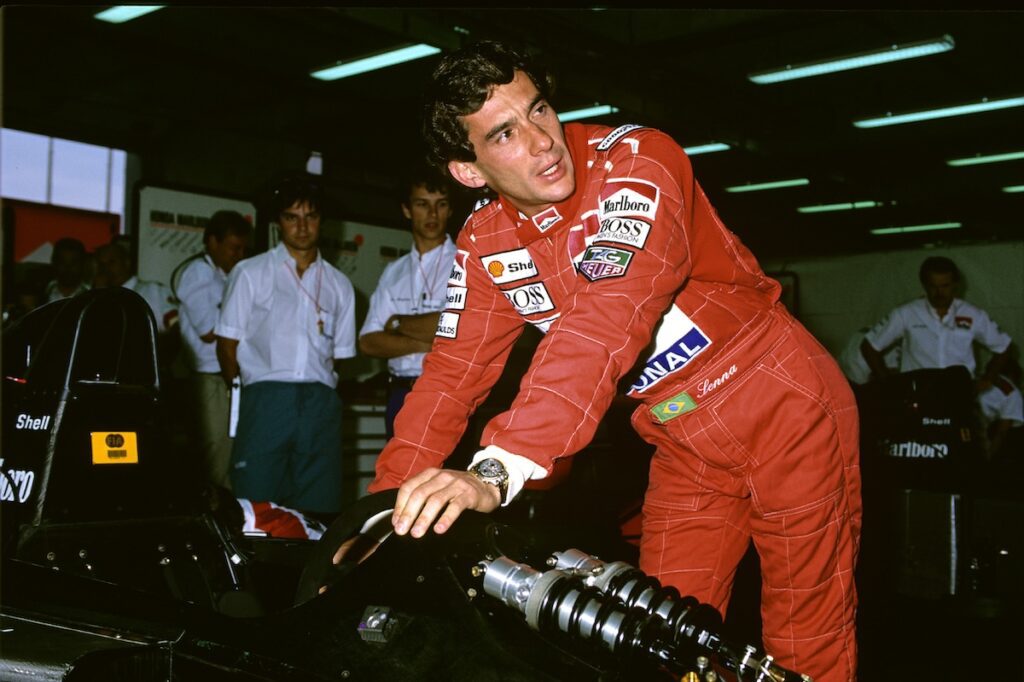 It was at Brazil’s Interlagos track in 1991 that a crucial scene was reimagined in Senna, and the one Gabriel found the most emotional to film. Ayrton had won the Brazilian Grand Prix for the first time, despite having a barely functioning gearbox and severe muscle cramps due to his harness straps being too tight. Between each shot Gabriel would do 100 push-ups, so he would be able to project physical fatigue during the scene. Ayrton was so exhausted and sore by the end of the race he could barely raise his trophy.
It was at Brazil’s Interlagos track in 1991 that a crucial scene was reimagined in Senna, and the one Gabriel found the most emotional to film. Ayrton had won the Brazilian Grand Prix for the first time, despite having a barely functioning gearbox and severe muscle cramps due to his harness straps being too tight. Between each shot Gabriel would do 100 push-ups, so he would be able to project physical fatigue during the scene. Ayrton was so exhausted and sore by the end of the race he could barely raise his trophy.
“He didn’t become the best driver of all time just by being skilled,” explains Gabriel. “He practised from a young age and dedicated his entire life to motorsport. He trained exhaustively in the rain, more than any other driver. That’s why he became ‘the king of the rain’. It was the marriage of talent and hard work. The series’ audience will have access to a more complete experience [than the award-winning 2010 documentary film Senna), beyond the races. For example: what was Ayrton like the night before the race?”
This is especially poignant and emotive in the lead up to the 1994 San Marino Grand Prix at Imola. On lap seven, Ayrton’s Williams inexplicably left the track and hit the wall at the Tamburello corner. The 130mph impact tore off the right-front wheel and drove it towards the cockpit, though it was part of the car’s broken suspension that dealt the fatal blow when it penetrated the iconic yellow helmet. In the final Netflix episode, it’s played out using real TV footage and not restaged.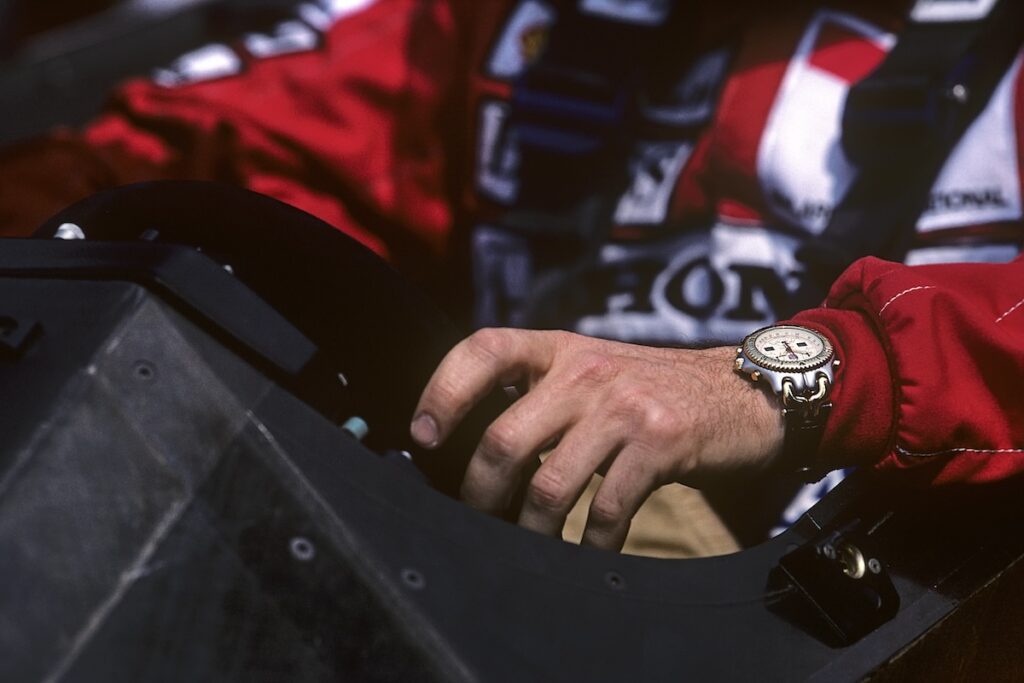 Ayrton’s body was flown home with a Brazilian fighter escort. To put this in context for a UK audience, the death of Ayrton hit Brazilians as hard as the death of Diana, Princess of Wales, hit Britons a few years later. Mourners turned out in their thousands to see his casket lying in state. The entire country came to a standstill as the funeral cortege made the ten-mile journey to Sao Paulo’s Morumbi cemetery, with key rival Alain Prost among the pallbearers. A guard of honour fired a salute over the unpretentious grave.
Ayrton’s body was flown home with a Brazilian fighter escort. To put this in context for a UK audience, the death of Ayrton hit Brazilians as hard as the death of Diana, Princess of Wales, hit Britons a few years later. Mourners turned out in their thousands to see his casket lying in state. The entire country came to a standstill as the funeral cortege made the ten-mile journey to Sao Paulo’s Morumbi cemetery, with key rival Alain Prost among the pallbearers. A guard of honour fired a salute over the unpretentious grave.
Everywhere, people held banners and messages: ‘Senna obrigado, ‘Adeus Senna’, and ‘Saudade’ — a simple but expressive word with no direct translation in English, but which connotes a deep longing for something or someone you loved, but is now either lost, gone or unobtainable forever.
Credits:
Historic photos of Ayrton Senna: Paul-Henri Cahier/Getty Images
Photos of Gabriel Leone in Senna: Netflix
Photos of TAG Heuer watch: TAG Heuer





